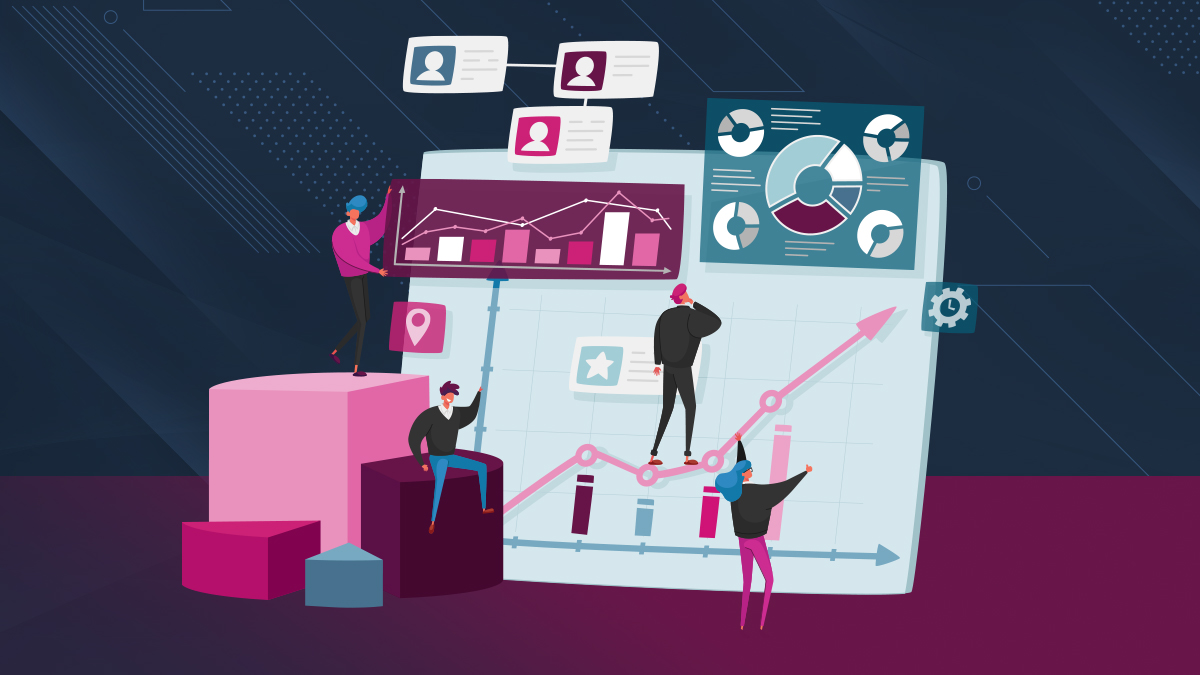Regardless of the scale of your marketing efforts, everything produces data. But what do you do with that data? You can export it and attempt to make sense of it on your own. However, there’s a much easier way to have the data translated, such as using a data visualization tool like Tableau to produce data dashboards. These types of tools allow you to use data to decipher problems and grasp concepts, some of which might not have been so obvious until it was visually represented for you.
The intent of a data dashboard is to make it easy for anyone to understand. This puts the power of digesting the data and making impactful changes into more than just one person’s hands. Gone are the days when you have to request reports from the one person who can pull them from certain platforms. Now, it’s available at your fingertips.
While it’s super easy to access once it’s set up, developing a data dashboard is an investment. When it’s done well, it will be crucially beneficial to your marketing team, and here’s why.
It’s understandable
Deciphering what large amounts of data can mean on a spreadsheet is much more difficult than understanding a visual representation. Visuals can quickly show you trends such as seasonality of when sales are high or low, consumer purchase timing decisions leading to an event, relationships between types of products people purchase conjointly, or comparing time periods against one another.
Having a visual representation of data will also really highlight any outliers that would otherwise be lost within a table full of data.
It’s interactive
Reporting doesn’t have to be flat. Dashboards combine different data sources all in one view, allowing it to be interactive so you can manipulate dates, dial in on a certain area, or scroll through tables without the report being super long.
Another major benefit of using a tool like Tableau is that it can be connected to different platforms so you can receive feeds of the data you are analyzing. This allows you to see near real-time results which means you can respond to issues and see resolutions faster. The learnings you can glean from the dashboards allow you to make quick adjustments to campaigns, then watch the results shift within days versus waiting until the next report comes out.
It’s sharable
The intent of these tools is to make data easy for anyone to understand so different departments can see the whole picture as well as focus in on areas that affect their specific disciplines. Plus, having one centralized version of your data means you can eliminate version control or having to re-send updates to a report since it’s accessed online and constantly refreshed.
It’s all worth it as an ongoing investment
Data visualization is an ongoing, constantly evolving effort and not a one-time stand up. Platforms that connect to your dashboards can break, or update, and cause connectivity issues. Having a dedicated resource available to provide quality assurance and management of the dashboard is important to keep the data accurate. If the data isn’t accurate, the dashboard isn’t useful.
As a client’s marketing partner, we have a responsibility to evolve the presentation of data that impacts the marketing decisions we can make together. Working with a digital tool for reporting means we can evolve it, remove what’s not meaningful anymore, and refine it. There’s never going to be one singular correct way to create a dashboard. Making it work for your specific marketing needs is absolutely possible and is going to be the most important way to measure its value.
